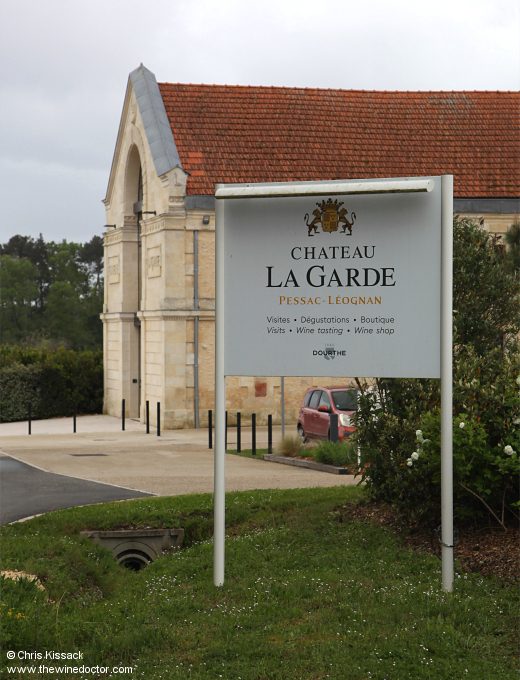Château La Garde: Tasting & Drinking
Starting with the red grand vin first, the blend here usually leans towards more Merlot, often between 60% and 65% of the total, the remainder often all Cabernet Sauvignon, sometimes with a soupçon of Petit Verdot. Having said that, in some vintages the percentage of Merlot can be reduced, e.g. down to 52% in 2019, or can even be in the minority, as with the 43% included in 2023. However you look at it though, Merlot forms a decent part of the blend, and it shows in the wine’s generous layers of summer fruits charming texture.
The white is intriguing. Once renowned for its high percentage of Sauvignon Gris – for example, the 2012 vintage was 47% Sauvignon Gris with 48% Sauvignon Blanc and 5% Semillon, this variety has now disappeared from the vineyard and the wine. Indeed, the 2015 vintage was the last time it appeared in the blend, by which time it had been reduced to just 10% of the total. The 2016 vintage was 86% Sauvignon Blanc and 14% Semillon, and that has been the basic blueprint for subsequent vintages, give or take a few percentage points. Exceptions include the 2020 and 2021 vintages, which were both 100% Sauvignon Blanc.
High-performing vintages in red include 2022, 2020, 2016 and 2010, although other vintages certainly have merit. The Mosaic de La Garde wines from the 2020 vintage are certainly worth a punt, should you be given the opportunity, although I preferred the harmonious whole offered by the blended 2020 wine. I also rather enjoyed the soft maturity of the 1990 vintage a year or two ago, although this is in reality a wine from another era, coming from the very early days of Vignobles Dourthe ownership.
As for the whites, these probably have a little more going for them, with or without their Sauvignon Gris. I like the 2022, 2021 and 2016 vintages. (20/11/24)

